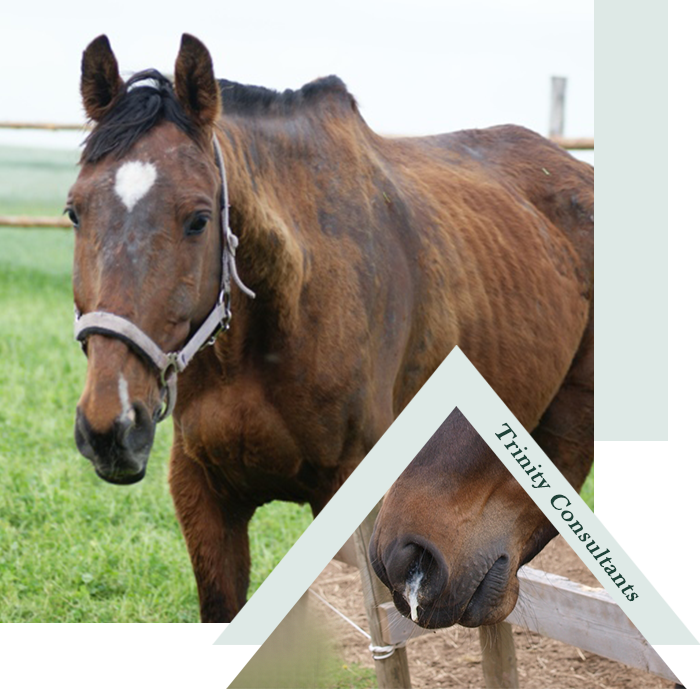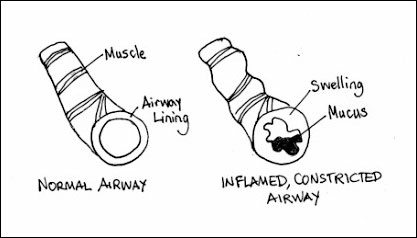COPD, also known as summer pasture-associated obstructive pulmonary disease (SPAOPD) and recurrent airway obstruction (RAO) or Heaves has been a problem for many years.
Symptoms of COPD
With Equine COPD, in most cases, inflammatory bronchiolitis results from a hypersensitivity reaction to inhaled allergens, as well as non-allergic airway overreaction to inhaled irritants and other substances such as endotoxins.
Horses commonly develop coughing, mucopurulent nasal discharge (especially when the head is lowered or after exercise) and increased expiratory effort (often with a double lift on expiration).
Often there is a history of ‘snot on the ground’ outside the stable door in the morning. These symptoms result from bronchospasm and accumulation of airway secretions, which also cause obstruction of the airways and often an increased respiratory rate.

Chronic Obstructive Pulmonary Disease or Heaves
It is on the extreme end of the respiratory allergy scale and is an allergic disease of the lung causing the small airways to constrict (get smaller in diameter) making it harder for the horse to breathe.
As a result, a horse may have a respiration rate of up to 36 or 40 breaths a minute – well above the usual 6 to 12 so causing the horse to breathe faster or deeper than usual and it may cough.
Many cases are very mild, and the signs may only be noticeable when the horse is exercised, but some cases can be very severe, causing permanent damage to the lungs.
COPD is also known as “Heaves” or Recurrent Airway Obstruction is a common condition affecting horses, ponies and donkeys of most breeds. Those under six years of age are rarely affected.

Causes of COPD
COPD in horses is caused by environmental problems such as dusty or mouldy hay, dust and moulds in bedding, or pollens, dust and other irritants in the environment.
When airborne allergens get down into the airways, they irritate the cells and cause mucus secretion, which will trigger a snort or cough. However, if the horse is allergic to one or more of these particle types, inhaling them will also cause inflammation.
Large numbers of white blood cells move into the area. Some of these cells secrete chemicals that cause swelling.
Others produce antibodies to the allergen(s) which causes even more inflammation. Because of the mucus and inflammation, less air can get through.
The smooth muscles in the walls of the lower airways constrict to prevent the allergens from passing further down into the lungs which reduce the amount of total air space in the airways and lungs.
Wheezing and coughing occur, which then worsen the irritation and inflammation in the lungs, causing a vicious circle in which the body’s own defences ultimately cause the most harm.
Horses Suffering from COPD
The lesions in the lungs of horses suffering from COPD are bronchiolitis with emphysema occurring in small areas. One of the major aims of treatment is to increase and or maintain adequate periphery circulation ensuring optimum blood flow to the lungs.
